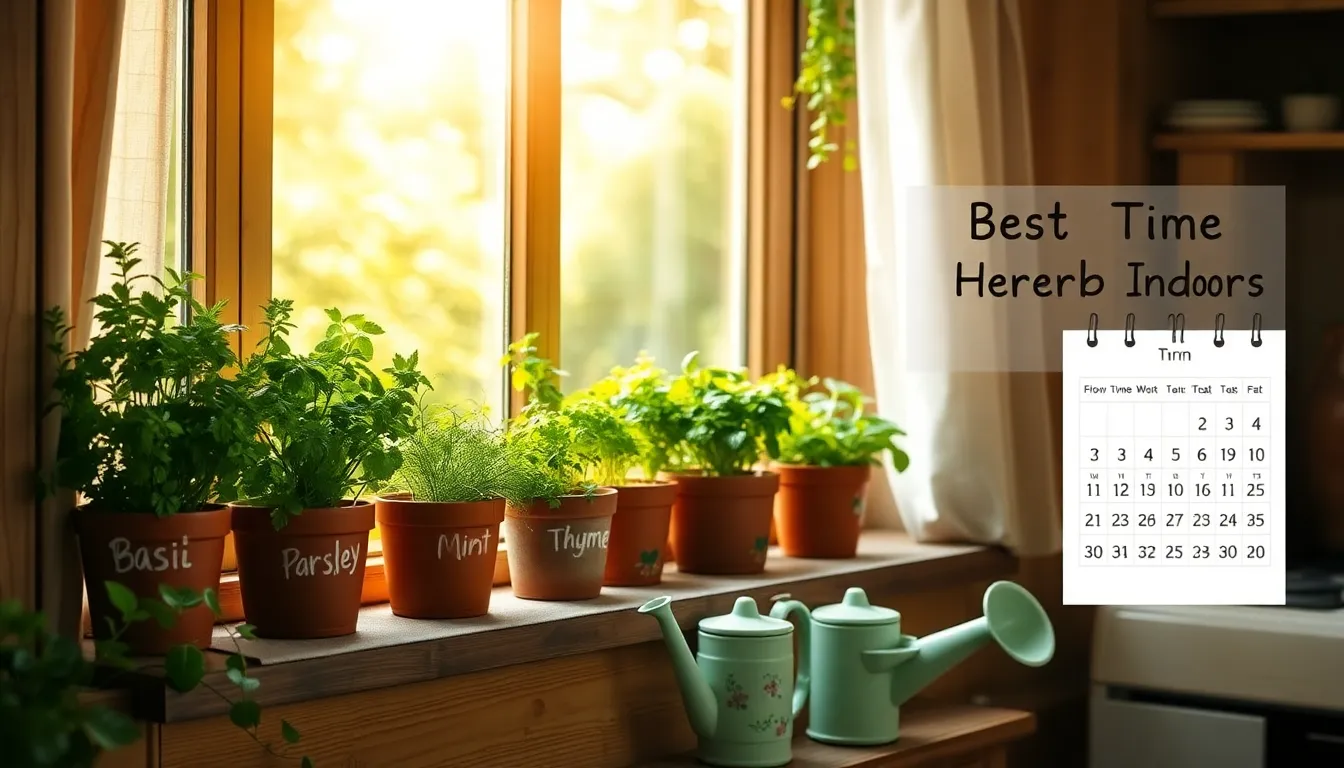There’s nothing quite like the satisfaction of plucking fresh herbs from your kitchen windowsill, ready to infuse your meals with vibrant flavors. Whether you’re a novice taking your first steps into the world of gardening or a seasoned horticulturist looking to expand your indoor oasis, “Best Time To Plant Herbs Indoors” is your trusted companion on this verdant journey.
In this guide, you’ll discover the optimal times to plant a variety of herbs, ensuring they thrive and flourish under your care. By understanding the rhythms of indoor gardening, you’ll unlock the door to year-round greenery, adding both beauty and utility to your home.
Imagine the joy of nurturing tiny seedlings into lush, aromatic plants that reward your efforts with every harvest. With practical tips and insights tailored for success, you’ll feel empowered to cultivate your own indoor herb garden with confidence and ease.
Basil (Genovese)
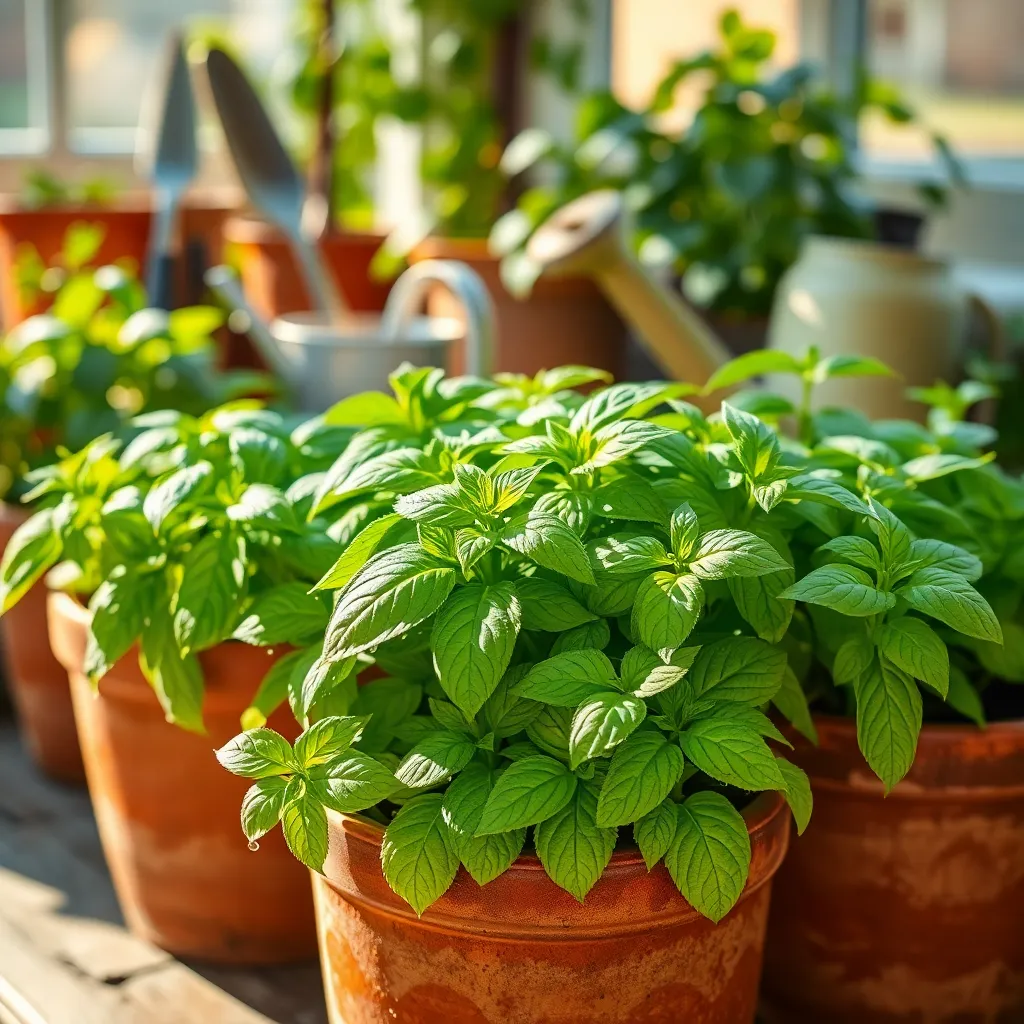
When it comes to growing Genovese basil indoors, timing and conditions are everything. For best results, plant your basil seeds in early spring to take advantage of the increasing daylight.
Basil thrives in well-draining soil, so using a potting mix that contains perlite or vermiculite is recommended. Ensure your containers have sufficient drainage holes to prevent waterlogging, which can lead to root rot.
Give your basil plants plenty of light by placing them in a sunny windowsill or under grow lights for at least 6-8 hours a day. If natural light is insufficient, consider investing in a full-spectrum grow light to mimic sunlight.
Water your basil regularly but avoid overwatering; the soil should be moist but not soggy. A good rule of thumb is to water when the top inch of soil feels dry to the touch.
For those looking to enhance their basil-growing skills, consider pinching off the top sets of leaves regularly. This encourages bushier growth and prevents the plant from flowering too early, which can affect the flavor.
Mint (Spearmint)
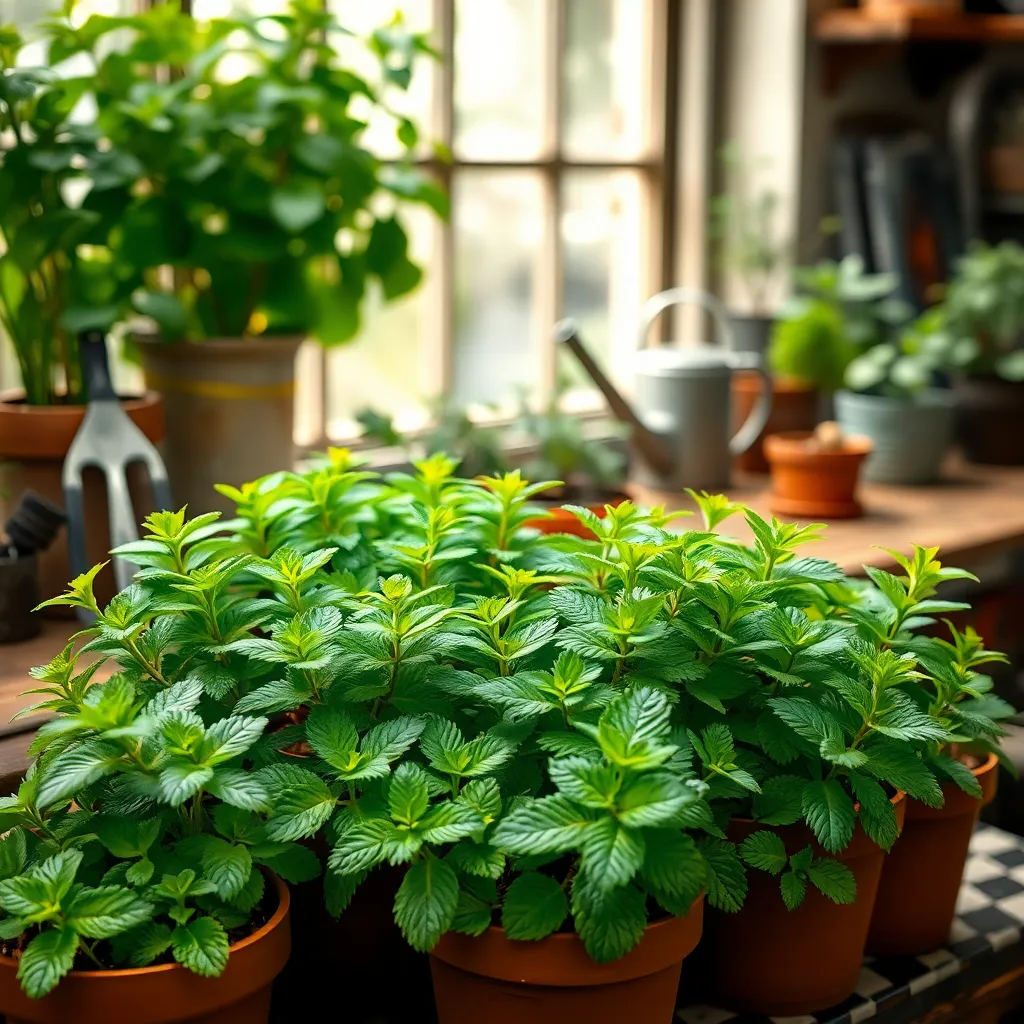
Growing mint indoors can be incredibly rewarding, especially with spearmint, which is known for its refreshing aroma and flavor. To start, choose a container with adequate drainage holes and fill it with a well-draining potting mix, as mint prefers moist but not waterlogged conditions.
Position your spearmint plant in a location where it will receive ample sunlight, ideally 6 to 8 hours of indirect light each day. If natural light is limited, consider using a grow light to supplement, ensuring the plant remains vibrant and healthy.
Regular watering is crucial, but be cautious not to overwater. Allow the top inch of soil to dry out before watering again, which helps prevent root rot and encourages strong growth.
For beginners, starting with a small plant or cutting is advisable, as mint can quickly overtake its space. More experienced gardeners might enjoy experimenting with propagation techniques such as root division or stem cuttings to expand their mint collection.
Thyme (English)
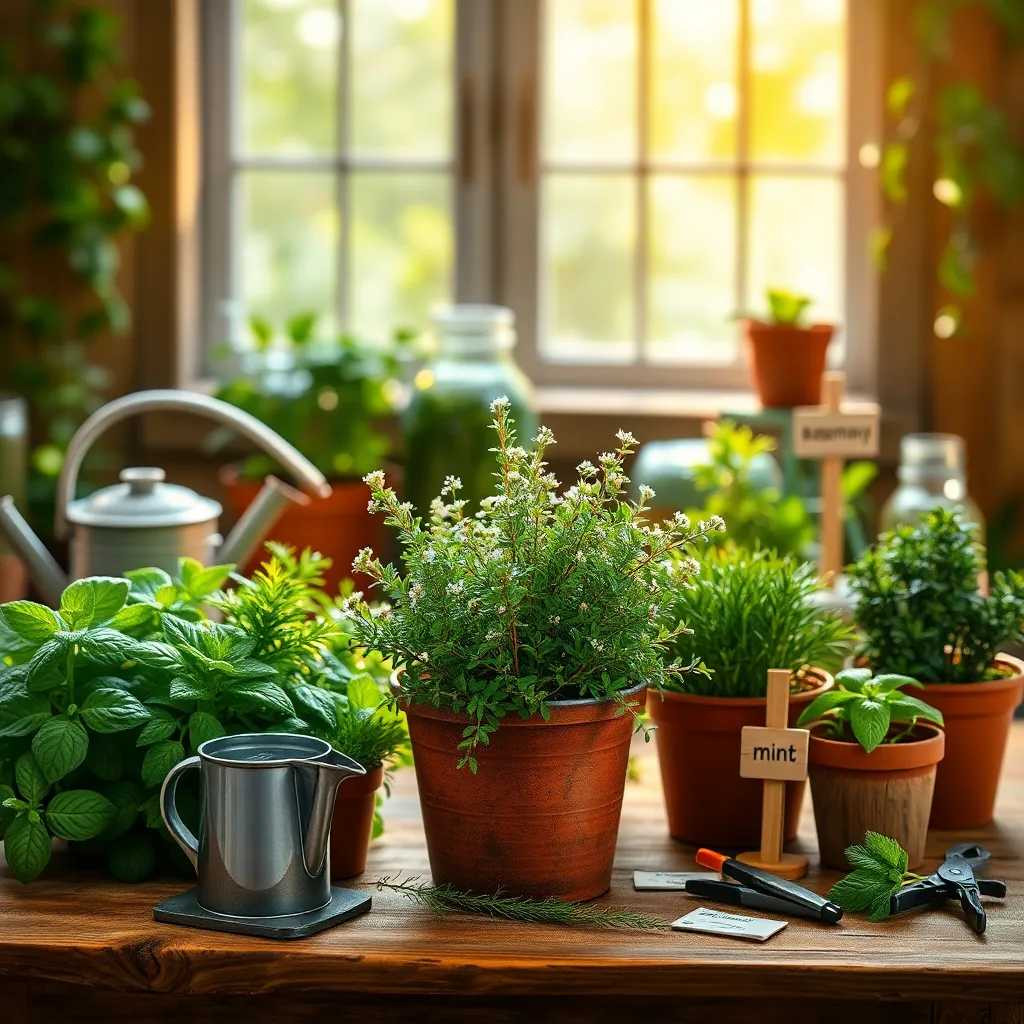
Thyme (English) is a versatile herb that thrives indoors, making it an excellent choice for home gardeners. To start growing thyme indoors, choose a well-draining potting mix and a pot with adequate drainage holes to prevent waterlogging.
Place your thyme plant in a sunny windowsill where it can receive at least six hours of direct sunlight daily. If natural light is insufficient, supplement with a grow light to ensure the plant receives enough light for healthy growth.
Water thyme sparingly, allowing the soil to dry out between waterings to avoid root rot. A good rule of thumb is to water just enough to keep the soil slightly moist but not soggy.
For more advanced care, consider pruning your thyme regularly to encourage bushier growth and to prevent it from becoming leggy. Additionally, fertilize your plant once a month with a half-strength, balanced liquid fertilizer to provide essential nutrients without overwhelming the plant.
Oregano (Greek)
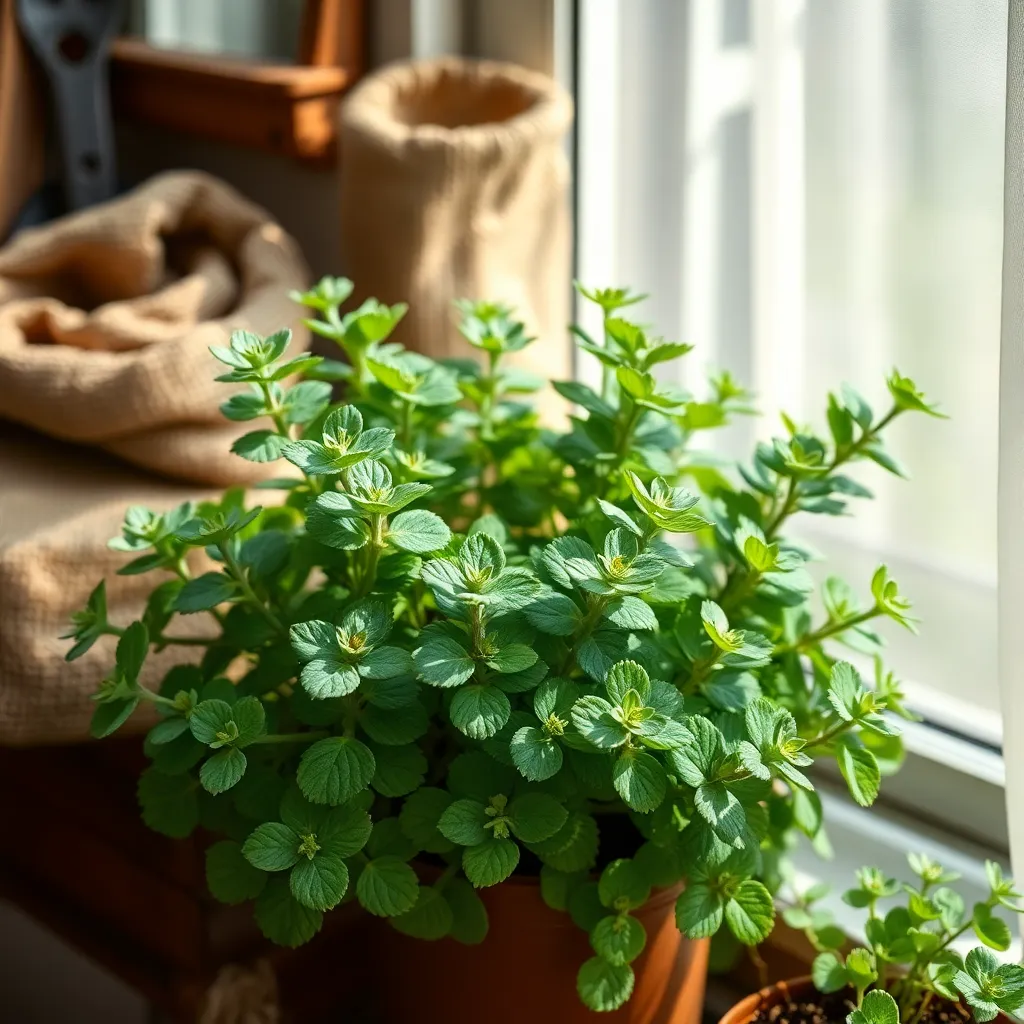
Growing Greek oregano indoors is a rewarding endeavor that begins with selecting the right time for planting. The best period to start is early spring, ensuring your plants get a head start before the longer days of summer.
Choose a well-draining potting mix, as Greek oregano thrives in a medium where excess water can easily escape. Consider a mix that incorporates perlite or sand to improve drainage, which is crucial for preventing root rot.
When it comes to light requirements, Greek oregano prefers a sunny spot that receives at least six hours of direct sunlight each day. If natural light is limited, a grow light can be a helpful alternative to ensure your plants flourish.
Maintaining consistent moisture levels is essential; water when the top inch of the soil feels dry to the touch. For more experienced gardeners, employing a moisture meter can provide precision in watering, helping avoid over or under-watering.
Parsley (Italian Flat-Leaf)
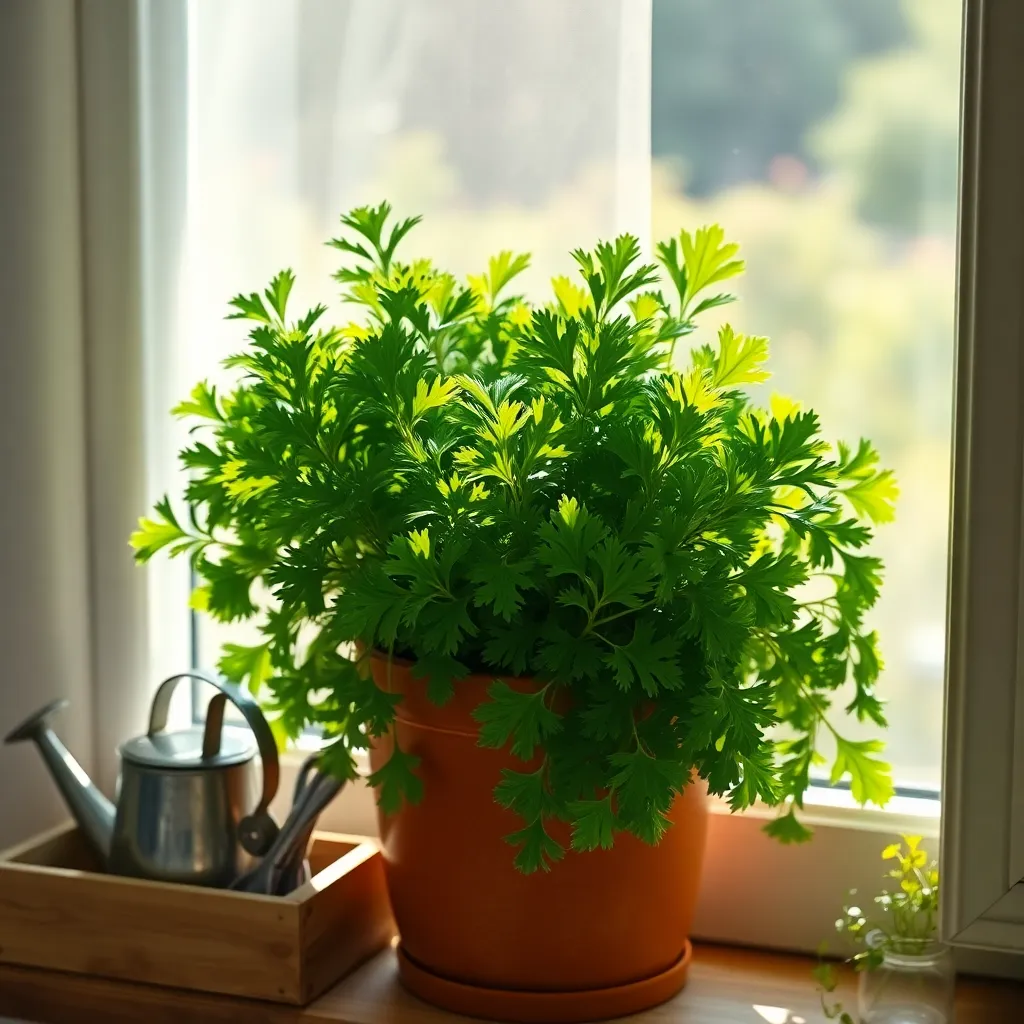
For those looking to grow Italian flat-leaf parsley indoors, timing is crucial for a successful harvest. You should aim to plant parsley seeds in early spring, or you can start them indoors 6-8 weeks before your last expected frost date.
Begin by filling a seed tray or small pots with a high-quality potting mix that drains well. Parsley prefers a pH level between 6.0 and 7.0, so selecting a mix that balances acidity is beneficial.
When planting the seeds, cover them with a thin layer of soil, about 1/4 inch deep, to ensure light can penetrate for germination. Maintain soil moisture with regular, light watering—avoid letting the soil dry out completely.
Once seedlings appear, thin them out to ensure each plant has enough space to thrive. As they grow, parsley plants require about 6-8 hours of bright, indirect light daily, making a sunny windowsill a perfect spot.
To encourage bushy growth, regularly trim the outer leaves, which are the most mature and flavorful. Avoid cutting the inner leaves as these are the new growth, and this practice will help your parsley plant continue producing.
Conclusion: Growing Success with These Plants
In “Best Time To Plant Herbs Indoors,” we explored five key relationship concepts that parallel the nurturing of indoor herbs: understanding the ideal timing for growth, creating a supportive environment, consistently nourishing your bonds, adapting to changes, and celebrating small milestones. Just as herbs thrive with careful attention and the right conditions, so too can your relationships blossom with mindful care and dedication.
As an actionable next step, take a moment today to identify one area of your relationship that could use a little extra nurturing—perhaps a weekly date night or a new communication ritual. Implement it this week and observe the positive impact it can have.
Remember, relationships, like indoor herbs, are a continual work in progress. Save or bookmark this article as a handy guide to revisit whenever you need a reminder or a fresh perspective. By doing so, you’re not just investing in the present moment but also paving the way for long-term relationship success.
Embrace the journey ahead, knowing that with patience and care, your relationships can flourish beautifully. Your commitment today sets the stage for a thriving partnership tomorrow.

